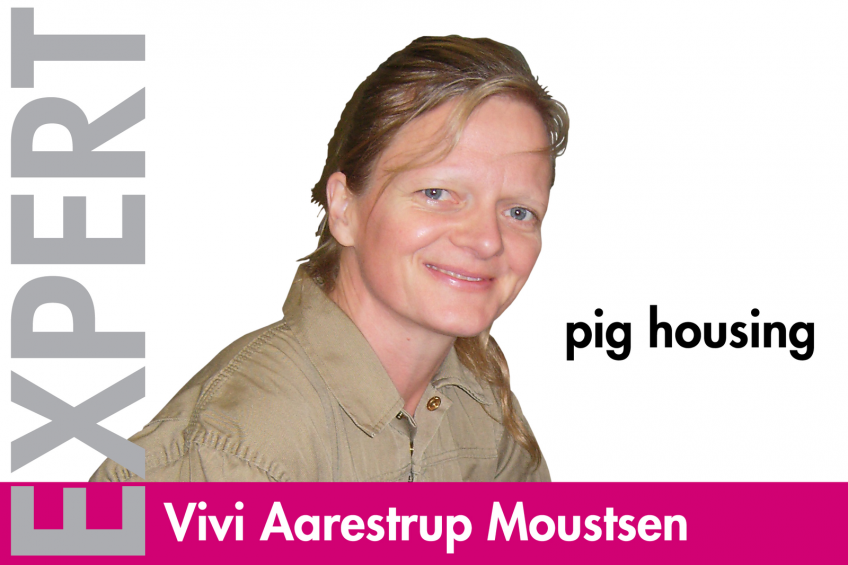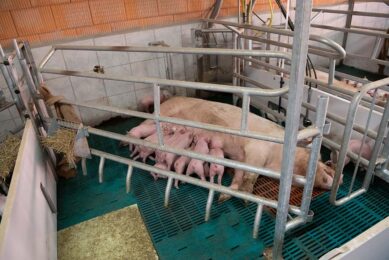A 2-step nurse sow strategy

The use of 2-step nurse sows can help to overcome problems related to very large litters. Hyperprolific sows – like the DanBred ones – give birth to more piglets than they have teats for.
Impact of large litters
Increasing litter size is a goal of pig breeders and producers in many countries, and the economic and environmental benefits for the pig industry is generally accepted. Evidence regarding the potential implications for sow welfare, however, has been limited. Recent research at University of Copenhagen showed no negative effect of prolonged lactation on salivary cortisol of nurse sows as a precursor of stress.
Handling excess piglets by the use of nurse sows
Danish pig producers manage large litters by:
- Cross fostering, where sows with less liveborn piglets than teats, receive the excess piglets from other sows;
- Use of nurse sows, where a sow weans her own piglets to give extra teat capacity to excess piglets.
In Europe (EU directive) piglets have to suckle for at least 21 days, before they can be weaned. In Denmark, a 2-step nurse strategy is commonly practiced, but different nurse sow strategies i.e. 1-step nurse sows are also used in practice.
The 2-step nurse sow
A potential nurse sow who has been lactating for 21 days, has a milk production level, which is too high for newborn piglets plus she is more reluctant to accept small piglets. Therefore a 2-step nurse sow system is optional. See the figure below.

Test of nurse sow welfare
Research indicates, that young sows are better at accepting the newborn piglets than older sows, hence they are more suitable to have their piglets removed to a 21-day nurse sow and receive newborn piglets. Retrospective analysis of herd data confirms this as a good strategy.
SEGES Pig Research Centre analysed data from 20 Danish herds, which in 2012-2013 all had an average litter size of at least 14.5 liveborn piglets per litter. The dataset included 79,868 farrowings (2012-2013). In the following litter, nurse sows gave birth to 0.57 more piglets per litter compared to sows who were not used as nurse sows. Nurse sows were less likely to be culled after weaning; and neither conception rate nor farrowing rate were affected.
But how do sows react, when receiving a new litter? In a controlled experiment, University of Copenhagen measured pulse, salivary cortisol and milk letdown frequency for:
- Sows, that kept their own litter for 3 weeks;
- Sows, that received newborn piglets 1 week post farrowing (Nurse 1 sows); and
- Sows, that received 1 week old piglets 3 weeks post farrowing (Nurse 2 sows).

Modified after Amdi and others, 2015
.
There was no negative effect of treatment on salivary cortisol between the 3 groups of sows. As an additional observation, cortisol declined throughout lactation for all 3 groups of sows. The decrease in salivary cortisol was still linear for the Nurse 2 sows during lactation of their second litter until 38 days post farrowing.
For futher reading: A document on nurse sows (in English) and on the subsequent reproduction round of nurse sows (in Danish).
Acknowledgement: Thanks to contribution from Post doc Charlotte Amdi (University of Copenhagen) and Senior Scientist Flemming Thorup (SEGES).











